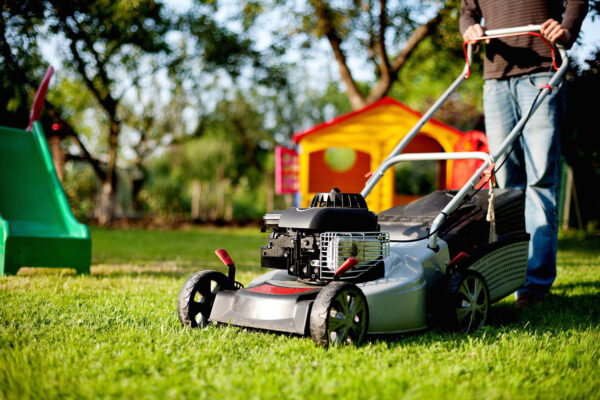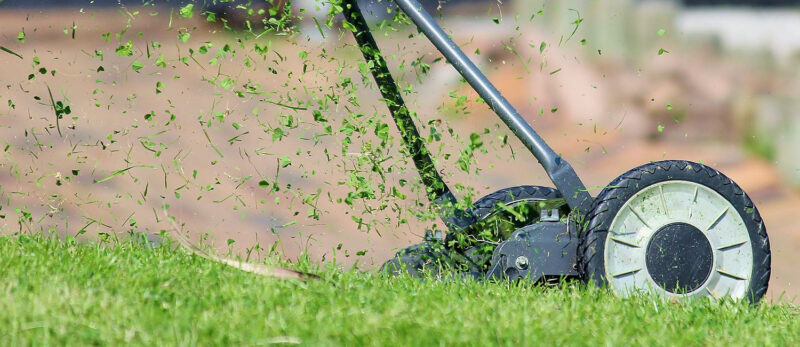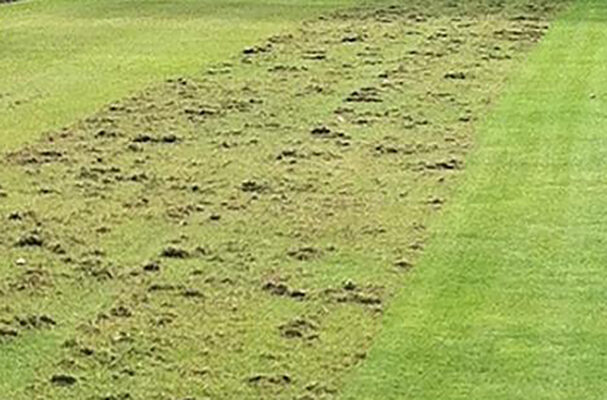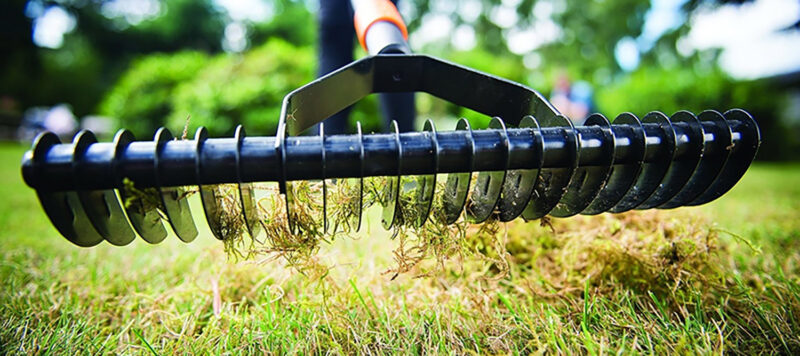How do you cut the grass of a garden lawn?
You will often find written that mowing the lawn is good for the lawn… let’s not talk nonsense! The lawn would live very well without our intervention.
Mowing the lawn is good for us and satisfies our need for a uniform, dense, comfortable and healthy lawn for walking and lying on it.
After all, we have every right to enjoy a wonderful, perfect lawn by following a few tricks.
Among the jobs in the garden, cutting the grass is one of the simplest, although tiring. Push a more or less performing machine and get the lawn all the same high. Right.
But then we notice that the lawn has yellow spots, empty areas, many weeds and we wonder where we went wrong.
The reasons are that you have to cut often and little.
When and how much to mow the lawn
The lawn is not cut in winter, once a week in spring and autumn and once every 15 days in August.
The lawn must have been cut at a height between 3 and 7 cm.
I recommend that you clean the tools you used to cut the grass thoroughly when you are done.
Use the robot if you are always away from home.
Why mow the lawn
Mowing the lawn thickens the plants which spreading in roots and partly aerial takes up more space on the ground and makes it difficult for weeds to grow.
A ROTARY type machine will be fine for obtaining a lawn over 3 cm. The height of an ornamental garden lawn ranges from 3 to 7 cm.
How, how much and when to mow a freshly sown lawn
This type of lawn has different needs from the existing one because the plants are fragile and must be stressed as little as possible.
In fact, the lawn gets stressed when we cut it. Like it or not we cause a wound to the plants and we must be aware of it. At least this wound is as minor as possible.
The rule therefore is that no more than 30% of the height of the blade of grass should be removed otherwise the plant consumes the reserve substances to survive without being able to produce new energy through photosynthesis (because it lacks a green surface) making the plant become yellow (scalping phenomenon).
In the case of the newly sown lawn it is necessary wait until the height of the blades of grass has reached at least 10 cm before cutting, but first it must be fertilized (we are in spring or autumn – see the article “The perfect lawn: How do you go about having a beautiful lawn?”) and wait a week.
Stop irrigation 3 days before cutting and do not cut more than 1/3 as already mentioned above. If you want to reach a lawn height of 5 cm, for example, you will cut 1/3 every 10-15 days so as to reach the desired height for the summer.
For the sake of transparency, I inform you that the more you want a low lawn, the more you will have to mow it. To give a reference size: a 4 cm lawn requires 30 cuts a year.
I also want to point out that a higher lawn – 10 cm – will better preserve the soil moisture: useful information in warmer areas.
Mowing a freshly sown lawn: what to avoid and what to pay attention to
To end the discussion on the new lawn, I must inform you that mulching is not done.
But what is mulching?
It is the type of cut that leaves the residues of the cut grass on the ground.
In practice, if you have a mower with a collection tank, you are not mulching. This type of cut, however, is fine if the residual grass is chopped very small and released on the ground in a distributed way. The residues will act as fertilizer.
However, when you see the piles of residual grass on the lawns this is not a good result and must be removed with the rake – or with a special scarifier. In fact, these piles, after the rain, create areas of water stagnation that can make the underlying grass sick, suffocate or drown (felt effect).
To avoid the felt effect, it is also good to cut the grass frequently.
Tips and tricks for cutting grass
In a perfect world I would also like to point out the best times to mow the lawn and I hope not to generate insults or deep feelings of guilt for what I have already written.
It would be better to avoid the hottest hours so as not to stress the plants more than they already are due to the heat.
In the evening it is recommended more on the internet and I find myself supporting this suggestion especially if we have set up irrigation at night.
For all information on garden irrigation, you can read the article “How to water the garden“.
Accepting the invitation of the professional and our reader Mr. Sergio Fiorentino, Curator – now in deserved retirement – of the Gardens of the Royal Museums of Turin, I specify that the information included in this article gives a guideline on how to deal with lawn cuts but, given the dry summer that has just ended, which perhaps precedes a series of years if not all drier than the previous ones, we also need to activate the ability to recognize the needs of our lawn.
For example, in the event of drought and in the absence of an active irrigation system (many now have it but keep it off) in spring and summer, bring the interval between one cut and another from 15 to 30 days.
The reading of meteorological phenomena therefore becomes as important as the management of the garden for the maintenance of the latter.
Now you can proceed with the second part of the article “How to mow the perfect lawn (part 2)” – just to increase the sense of guilt – or you can apply the first tips. Our new wonderful outdoor space is about to be born!
GOOD WORK and … if you have any questions please write to info@mondodelgiardino.com
Image sources: lawn mowing-manual lawnmower and lawn-mowing-motorized lawnmower are taken from pixabay.com. lawn mowing-aerator from teknogarden.com; lawn mowing-defeltritura from tevereprati.it






